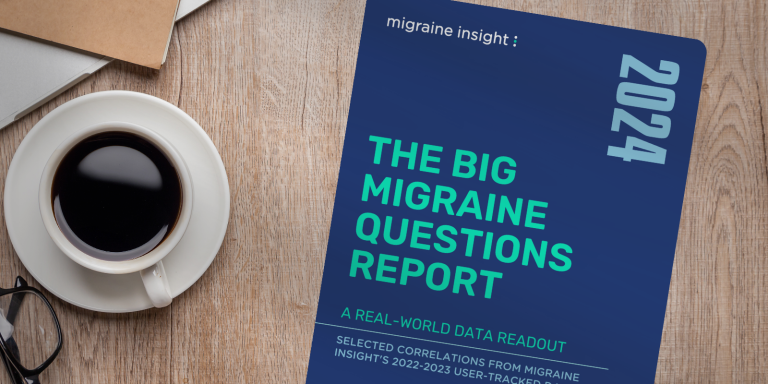
The Big Migraine Questions Report 2024
In this report, we dig in to the data and explore population-based insights from a community perspective. We’re excited to share these interesting findings and give you our take.
Over 50 thousand people have used Migraine Insight to finally get a clear picture of which triggers correlate with episodes for them, individually.
And, we’re happy to announce that 92% of our users have generously agreed to contribute their data, anonymously, to see what that data could mean for the overall migraine community.
We’re asking the question: Even though people track for themselves, what can the larger overall dataset tell us as a group?
Welcome to the first annual Big Migraine Questions Report.
In this report:
Question 1: Does Bad Weather Result in More Migraines?
Question 2: Which Foods Are The Biggest Migraine Triggers?
Knowing which foods have a higher positive correlation to migraine frequency in the hours after ingestion is an important factor (suspected trigger) to explore for individuals living with migraine. A high correlation could suggests to the person or their doctor that this person is sensitive to that food.
In this report, we look at the food triggers that came up as ‘highly correlated’ more often over a population, rather than an individual. These statistics can help people who are just starting to find triggers narrow down where to look, help researchers prioritize, and help doctors with consults.
This list contains some interesting ‘real world’ correlations with the usual suspects (e.g. red wine, chocolate), and a few on the list we weren’t expecting.
Question 3: What Medications Do People Stay On the Longest (Most Effective)?
People track medications and treatments in our app. We wondered which medications people track are taken longer, on average. Over a group of people – then, that might suggest the medication is more effective. This is the hypothesis we put forward while looking at this data.
Question 4: How Do Exercise, Activity and Workouts Affect Migraines?
In this section of the report, we look at both workout frequency and steps activity. Both seem to point to the same conclusion – overall, when people are tracking activity, more activity correlates with fewer migraines.
Keep in mind, only people with the ability to exercise will be tracking workouts. And, a lot more analysis needs to be done to look at this data across various scenarios. This part of the report is one area we are looking forward to expanding into further in future reports.
Question 5: Does Skipping a Meal or Fasting Produce a Migraine?
We look at the data on skipping meals. Users who track this have a clear correlation overall on skipping meals (i.e. fasting) as a trigger for episodes.
Question 6: How Will Real World Data Change The Game for People Living With Migraine?
Real world data is incredibly valuable for population data studies and AI training. We can start to get clearer answers to questions like:
When a medication is taken, what happened in the hours after? (Keep in mind, current EHRs only track if a med was prescribed. But, was it taken? Did it cause a reaction? Was it effective? – None of that is a question we can even start to assess with EHR data. Clinical trials often track for larger side effects. Ongoing RWD datasets can start to cross reference population attributes (e.g. age of migraine onset, age, local air pollution, etc) with the effects of what we put in our bodies, how and when it’s administered – and, a lot of other very important dynamic axis.
A word about data privacy
We are committed to data security and keeping private information private.
As with all that we do, we work to ensure that no source data is ever shared. This report only gives aggregate statistics. We believe what is shared in the report can help both patients and doctors. This is the first report of it’s kind – and, we hope it’s useful to you.
Get The Full Report
